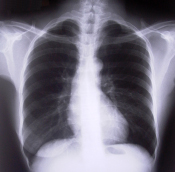New Injectable Bone Cement Might Make Bone Grafts Unnecessary
Author: tiger Published Under: Health

Scientists at Nottingham University have recently announced a new way to treat broken bones, which could potentially replace the oft painful process of bone grafting. The new method involves an improved type of bone cement that can be injected into the fractured bones and will rapidly harden as it is brought up to body temperature.
At room temperature, the cement has a consistency that is similar to toothpaste, but it becomes hard as bone when it reaches body temperature. This provides a scaffolding that the damaged bone can use to safely rebuild. The cement is injected into the fracture and quickly hardens.
Doctors have been using scaffolding techniques for some time. What sets this new type of scaffolding apart from other types of cement is that it does not give off heat as it hardens. Traditional bone cements get hot as they hardens, which can kill surrounding cells and tissue. This makes using traditional bone cement impossible in certain areas, like for instance around the heart.
The new cement might also reduce the need for bone grafts in patients. Bone grafts are used to allow a bone to heal and can be very effective, but it can also be very painful, is very complex, and requires at least one surgical operation. A piece of bone healthy bone is taken from the body, often from the hip or ribs, and placed is between the fracture. As the bone heals, the fracture merges with the new piece of bone.
The scaffolding, which was developed in large part by Professor Kevin Shakesheff, offers many advantages over traditional cements and also bone grafts. In theory, the procedure can be done without requiring a surgical operation and without the need for a surgical incision. As the bone heals, cells grow in between the non-porous scaffolding, until eventually all that is left is the healthy bone.
Shakesheff has been experimenting with tissue scaffolding for some time. In 2003, he was part of a team that developed an injectable scaffolding, which was porous enough for cells to healthily grow in. Traditional injectable scaffoldings utilized polymer gels, which, while effective, were not porous enough for the bodies network of blood vessels to infiltrate the scaffolding, thereby hindering the healing process.
While very promising, there is still much more research and development needed before this new scaffolding is ready for use in hospitals. One of the drawbacks is that even though it becomes as hard as bone, the actual bond between the cement and old bone is weakened, so in a fractured leg, metal pins would be needed to allow the patient to walk.
Due to regulations, Shakesheff’s scaffolding can be developed and implemented in the United States much easier, possibly as soon as 2010, so Shakesheff has started a biotechnology firm to further research, develop, and market his new invention.